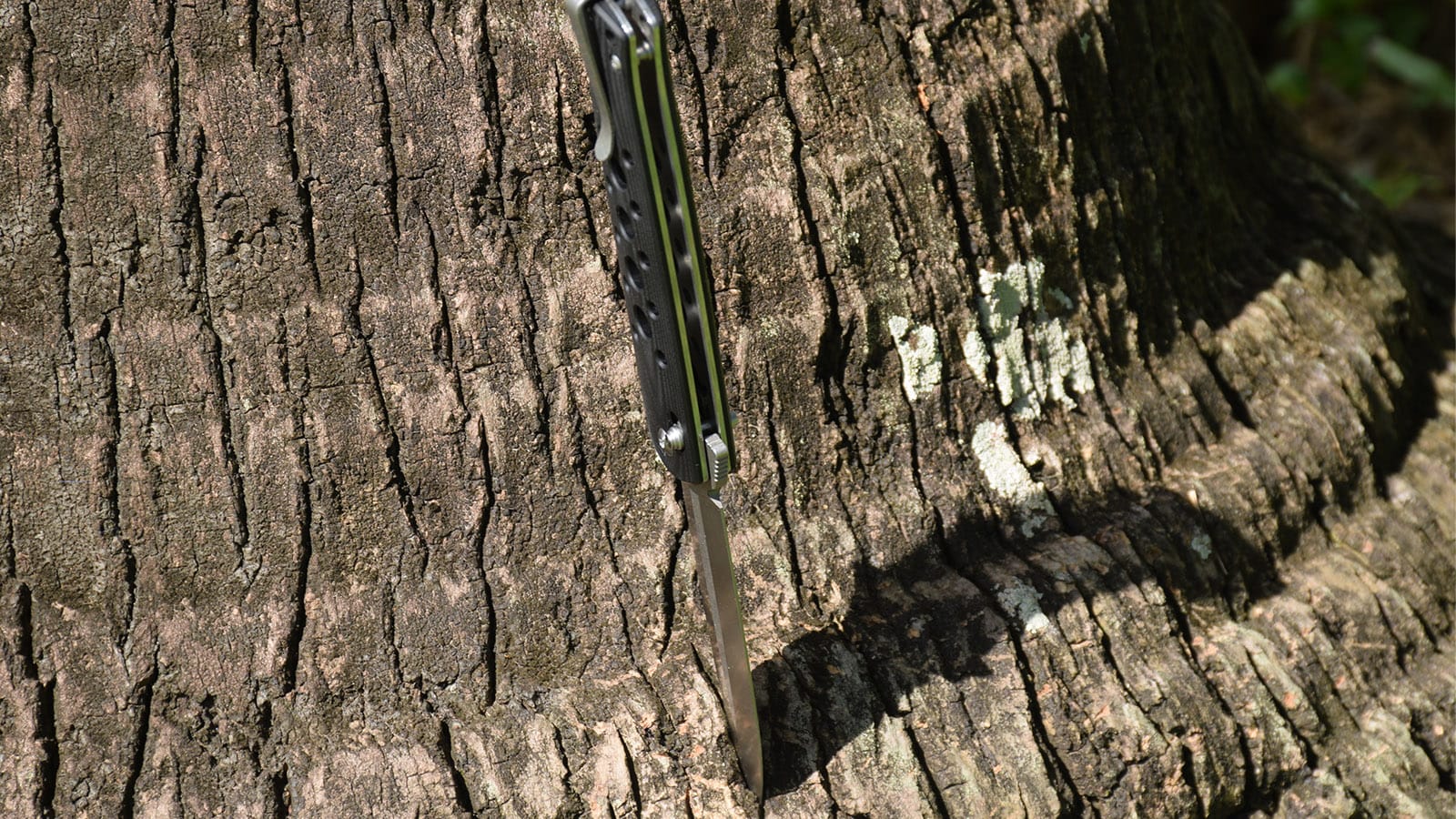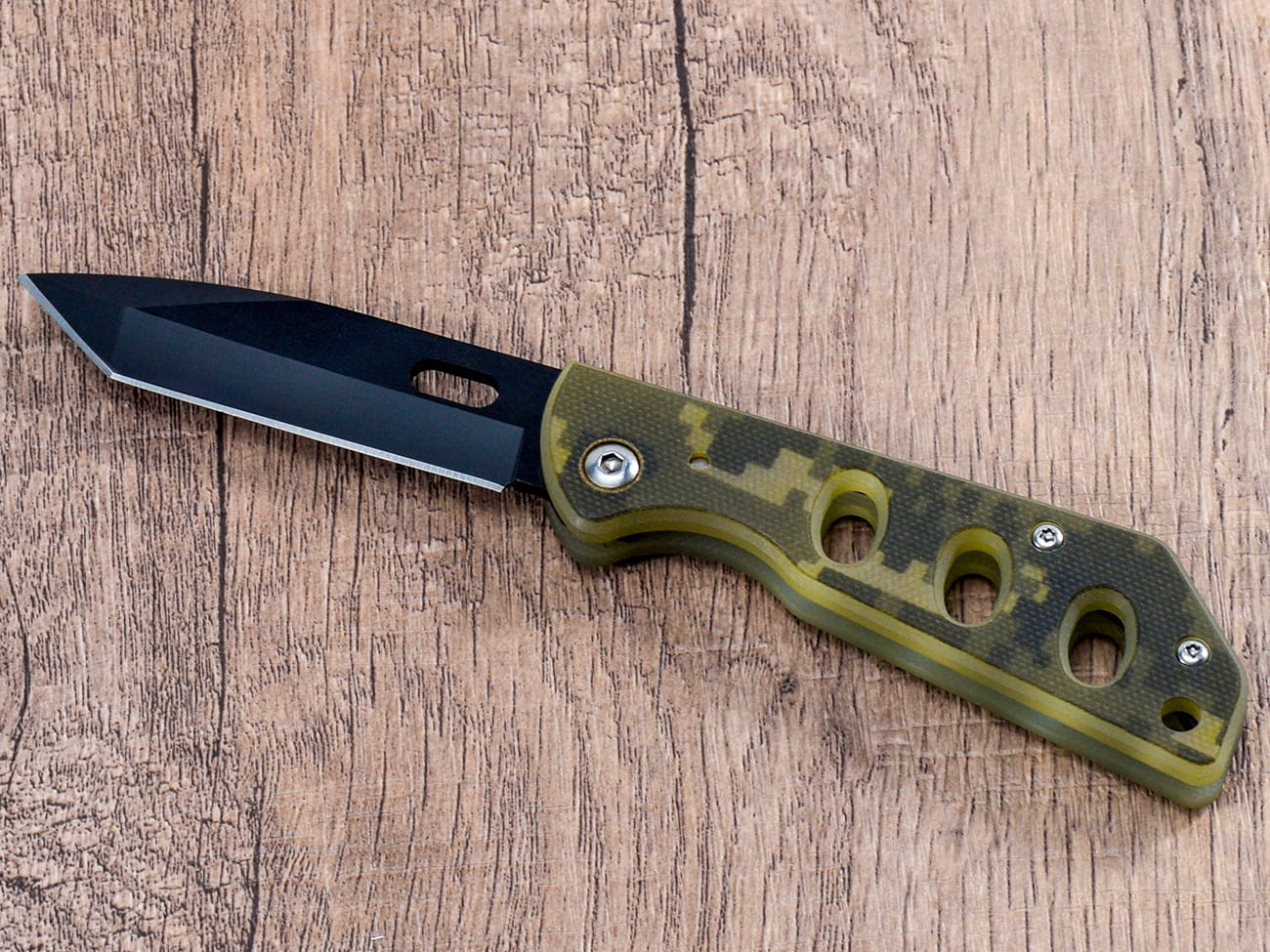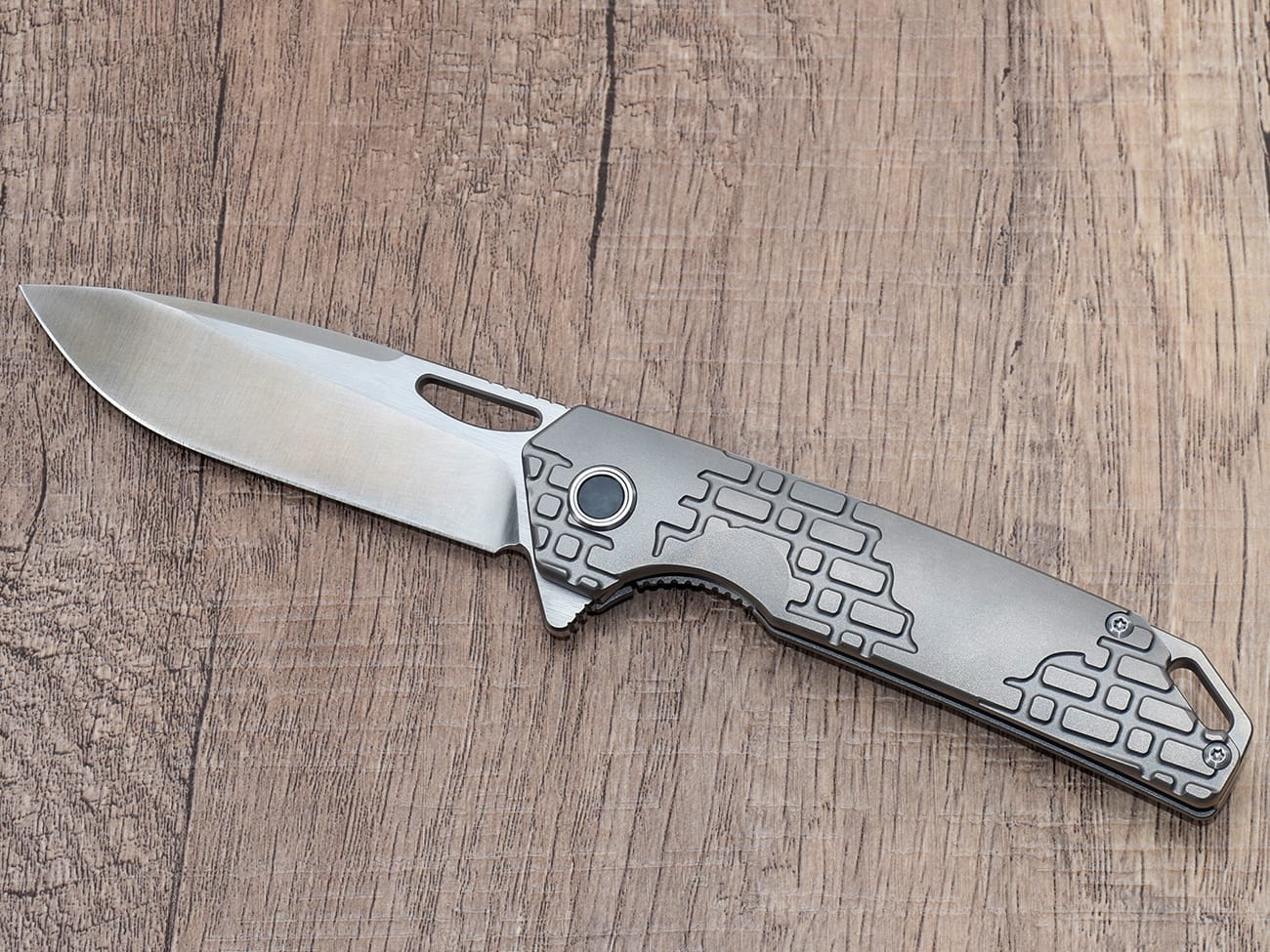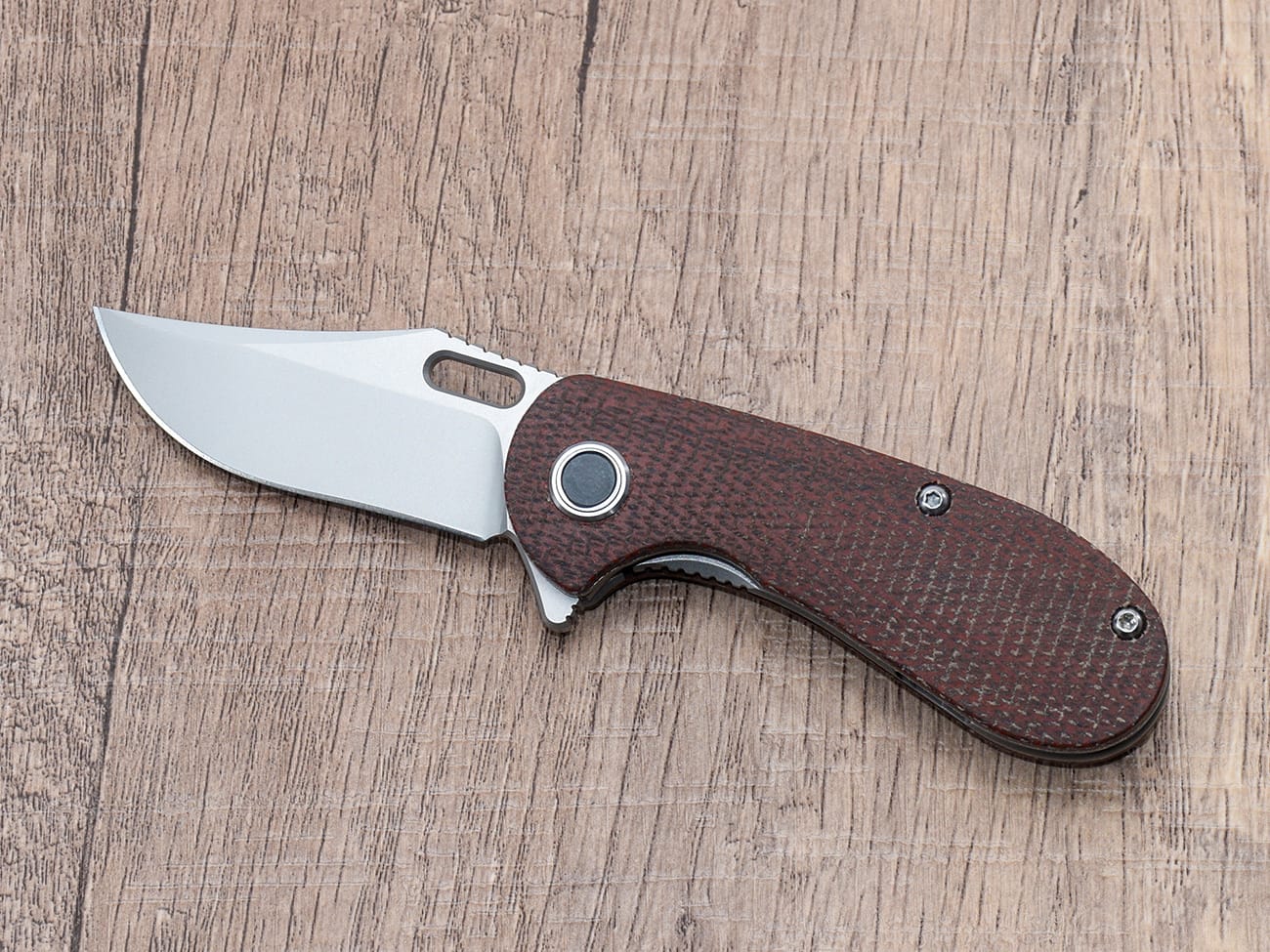Aluminum handle pocket knives have become increasingly popular among outdoor enthusiasts, collectors, and everyday carriers. But how do they stack up in terms of durability? This comprehensive guide will explore the strengths and potential weaknesses of aluminum as a knife handle material, helping you decide if it’s the right choice for your needs.
Why Aluminum Handles Are Worth Considering
Aluminum offers a unique combination of lightweight design and strength that makes it an attractive option for pocket knife handles. Whether you’re an avid outdoorsman or simply looking for a reliable everyday carry (EDC) knife, understanding the durability of aluminum handles can help you make an informed decision.
The Durability of Aluminum Handle Pocket Knives: Key Points to Consider
- What makes aluminum a good choice for knife handles?
- How does aluminum compare to other handle materials?
- Are aluminum handles prone to scratches and dents?
- Can aluminum handles withstand extreme temperatures?
- Do aluminum handles provide a good grip?
- How does the weight of aluminum affect knife durability?
- Are there different grades of aluminum used in knife handles?
- How does anodization impact the durability of aluminum handles?
- What maintenance is required for aluminum handle knives?
- Are there any drawbacks to aluminum handles?
1. What makes aluminum a good choice for knife handles?
Aluminum is a popular choice for knife handle materials due to its excellent strength-to-weight ratio. It’s significantly lighter than steel or titanium, yet still offers good durability. Aluminum handles are:
- Corrosion-resistant
- Lightweight
- Easy to machine and shape
- Able to be anodized for added protection and color options
These properties make aluminum an attractive option for both manufacturers and users looking for a durable, lightweight pocket knife.
2. How does aluminum compare to other handle materials?
When comparing aluminum to other common handle materials, it falls somewhere in the middle in terms of overall durability:
- More durable than plastic handles
- Generally tougher than wood handles
- Not as hard as G-10 or Micarta
- Less scratch-resistant than titanium
Aluminum offers a good balance of durability and weight, making it a versatile choice for many knife designs.
3. Are aluminum handles prone to scratches and dents?
While aluminum is relatively strong, it is softer than some other metals used in knife handles. This means:
- Aluminum handles can scratch more easily than titanium or steel
- They may dent if subjected to significant impact
However, many users find that these minor imperfections add character to the knife over time. Additionally, anodized aluminum handles offer improved scratch resistance.
4. Can aluminum handles withstand extreme temperatures?
Aluminum handles perform well in a wide range of temperatures:
- They don’t become brittle in cold weather like some plastics
- Aluminum dissipates heat quickly, preventing the handle from becoming too hot to hold
- The material maintains its structural integrity in both hot and cold environments
This temperature stability makes aluminum-handled knives suitable for various outdoor activities and climates.
5. Do aluminum handles provide a good grip?
The texture and grip of aluminum handles can vary depending on the design:
- Smooth aluminum can be slippery when wet
- Many manufacturers add texturing or grooves to improve grip
- Anodized aluminum often provides better traction than bare aluminum
For optimal grip, look for aluminum handles with thoughtful ergonomics and texturing.
6. How does the weight of aluminum affect knife durability?
The lightweight nature of aluminum contributes to the overall durability of the knife in several ways:
- Reduces stress on pivot points and locking mechanisms
- Allows for larger handles without significantly increasing overall weight
- Makes the knife more comfortable to carry and use for extended periods
These factors can help extend the lifespan of the knife and improve its practicality for everyday use.
7. Are there different grades of aluminum used in knife handles?
Yes, knife manufacturers use various aluminum alloys, each with its own properties:
- 6061 aluminum: A common, general-purpose alloy with good strength and corrosion resistance
- 7075 aluminum: A higher-strength alloy often used in premium knives
- Aircraft-grade aluminum: A term often used to describe high-quality aluminum alloys
Higher-grade alloys generally offer improved durability and strength, but may come at a higher cost.
8. How does anodization impact the durability of aluminum handles?
Anodization is an electrochemical process that creates a hard, protective oxide layer on the aluminum surface. This process:
- Increases scratch and wear resistance
- Improves corrosion resistance
- Allows for a wide range of color options
- Creates a non-conductive surface layer
Anodized aluminum handles are generally more durable than non-anodized ones, making them a popular choice for high-quality pocket knives.
9. What maintenance is required for aluminum handle knives?
Aluminum handle knives are relatively low-maintenance:
- Regular cleaning with mild soap and water is usually sufficient
- Avoid harsh chemicals that could damage the anodized finish
- Occasionally apply a light lubricant to the pivot and locking mechanism
- Check for any loose screws or parts periodically
With proper care, an aluminum handle knife can last for many years of regular use.
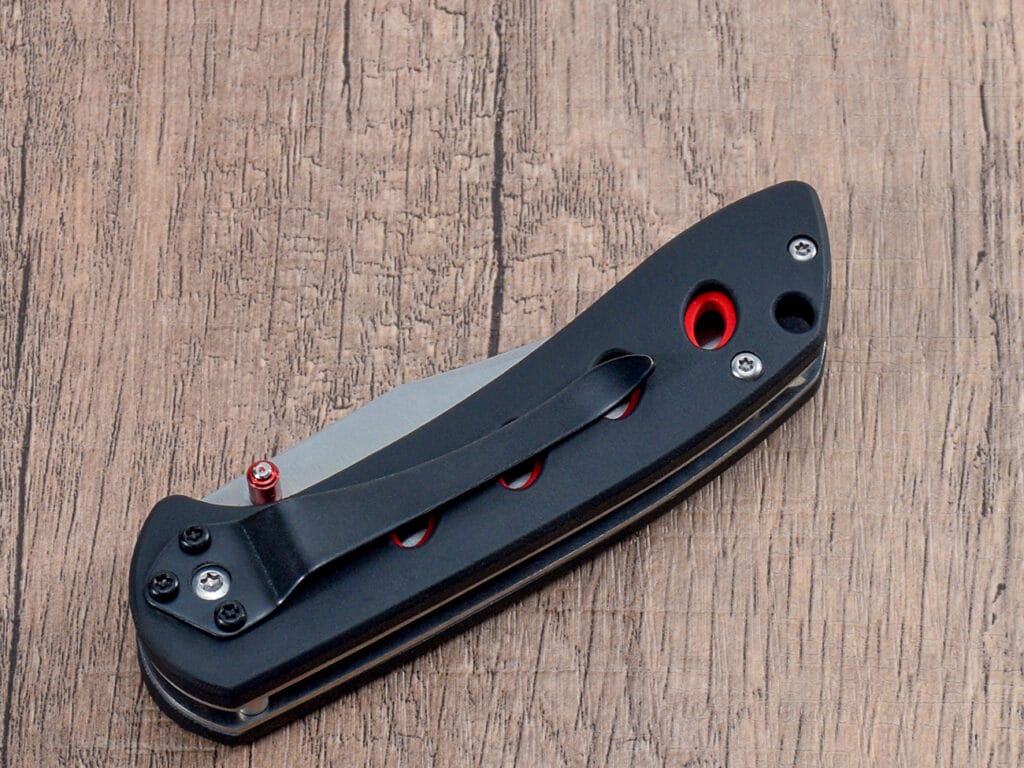
A custom folding knife with a G10 handle and black pocket clip, showcasing an alternative handle material to aluminum
10. Are there any drawbacks to aluminum handles?
While aluminum handles offer many benefits, there are some potential drawbacks to consider:
- They can feel cold to the touch in low temperatures
- Some users prefer the feel of natural materials like wood or bone
- Higher-end handle materials like titanium may offer superior durability
- Aluminum can conduct electricity, which may be a concern in some situations
Consider these factors alongside the benefits when deciding if an aluminum handle knife is right for you.
Key Takeaways: The Durability of Aluminum Handle Pocket Knives
- Aluminum offers an excellent strength-to-weight ratio for knife handles
- Anodized aluminum provides improved scratch and corrosion resistance
- Aluminum handles perform well in various temperatures and environments
- Proper texturing and design can enhance grip on aluminum handles
- Regular maintenance can help extend the lifespan of aluminum handle knives
- Consider your specific needs and preferences when choosing between aluminum and other handle materials
In conclusion, aluminum handle pocket knives can be quite durable when properly designed and cared for. They offer a great balance of weight, strength, and corrosion resistance that makes them suitable for a wide range of uses. While they may not be as scratch-resistant as some higher-end materials, their overall durability and practicality make them a popular choice for both casual users and knife enthusiasts alike.

